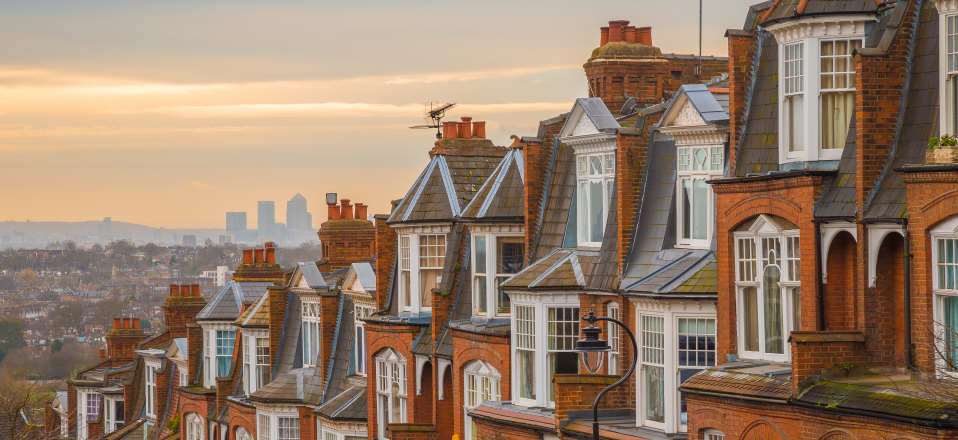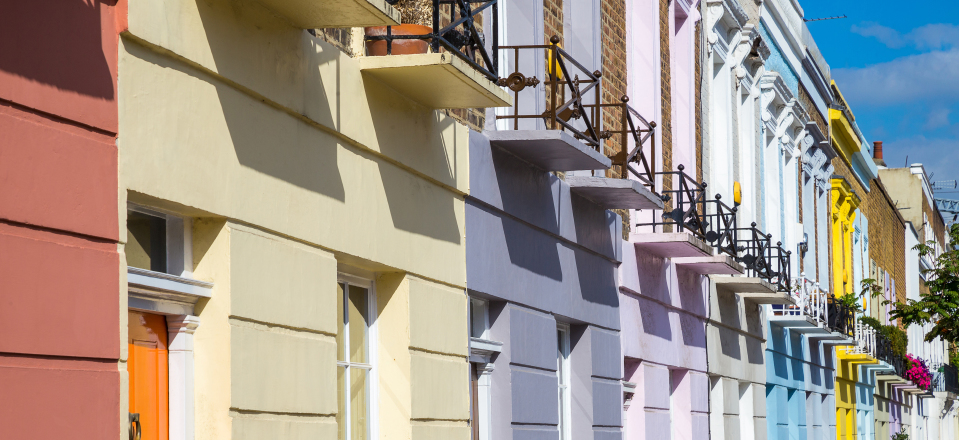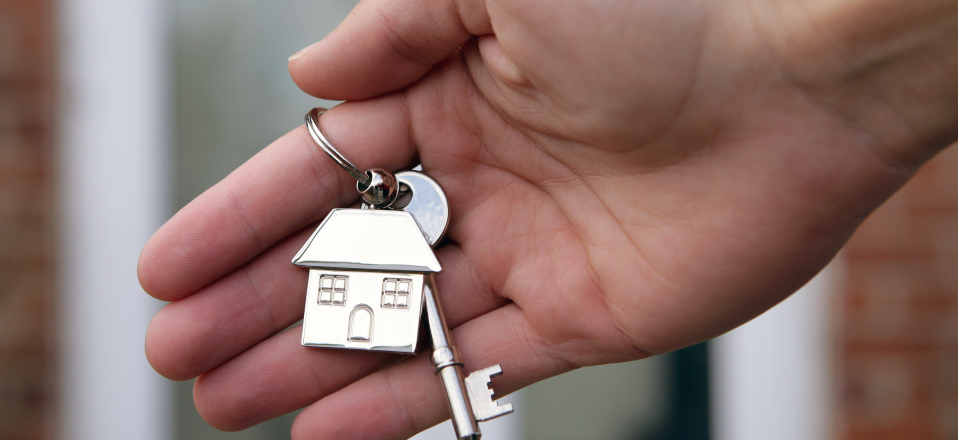Is it time for a stamp duty holiday?
We look at previous stamp duty holiday statistics, the current regime and key benefits to answer: is it time for a stamp duty holiday?
Since April, there have been several calls for a stamp duty holiday to help revive the housing market as lockdown eases.
The physical restrictions during lockdown had a substantial impact on the market, which Zoopla has examined in the latest Cities Index and Rental Market Reports.
The opening of estate agency branches from last week is a welcomed development, allowing activity to proceed, but it makes sense that any sort of a tax cut could further help boost activity in the market.
The government will want to examine the fundamentals of any such proposals carefully.
Our calculations in April showed that housing transactions could be down by 50% this year, which could mean halving stamp duty receipts to £4 billion - assuming house prices don’t change.
How would a stamp duty holiday work?
The theory is that giving potential buyers an effective tax break (by cutting their stamp duty bill to zero), will encourage them to move home.
The ‘holiday’ aspect means there’s an impetus to act because it’s not a permanent change.
There’s an argument that this only brings forward activity that would have happened anyway. But when trying to give the economy a boost, this seems acceptable.
A stamp duty holiday is not only about helping people achieve their goals in terms of housing. It’s also about how important the housing market is to the economy as a whole.
When you move into a new home, you need to organise your finances and utilities.
The act of moving includes other services too. You may want to re-decorate, buy additional furnishings or do something with the garden. All of this supports the retail sector.
This ‘network’ effect on the economy means that the government is keen to encourage housing mobility.
Have there been stamp duty holidays in the past, and did they work?
Yes. And sometimes.
The stamp duty holiday introduced during the recession in late 1991 to 1992 was at the time when the housing market slumped (amid very high interest rates).
The stamp duty rate at that time was just 1%. The threshold for paying stamp duty was temporarily raised from £30,000 to £250,000. The average price of a home was just over £50,000.
Despite this intervention, housing transactions in 1992 were still lower than in 1991 and house prices still fell. But the likelihood is the figures would have looked far worse without a stamp duty holiday.
During the financial crisis in 2008 to 2009, another stamp duty holiday was introduced.
This holiday raised the lowest threshold for paying the 1% rate of stamp duty from £125,000 to £175,000. The rates for more expensive properties were 3% and 4%.
The average price of a home at this point was just under £175,000.
The level of transactions fell by 5% in 2009, but this came after a 44% decline in 2008. It was followed by a 3% rise in activity in 2010.
But some of this can also be attributed to price adjustments and the beginning of green shoots in the economy.
What’s the current stamp duty regime?
In 2014, the method of calculating stamp duty changed. And so did the rates at which this tax is charged (Scotland followed with changes in 2015).
This effectively cut the tax bill on homes worth up to £940,000 (which account for more than 95% of households), but cranked up the charges for more expensive properties.
In 2009, the most expensive stamp duty band was 4%.
This is now 12%, rising to 15% for some buyers and 17% for overseas buyers purchasing in England from next year.
A complete stamp duty holiday today would mean larger savings, but only for some.
First-time buyers purchasing a home in England or Northern Ireland for up to £300,000 will see no change, as they have been exempt from this property tax since 2017.
This helped around 214,000 buyers purchase a home in 2018/19.
In Scotland, first-time buyers pay no stamp duty on purchases on properties with a value of up to £175,000, while in Wales the nil-rate band for all buyers was set at £180,000 in 2018.
So, who’d benefit from a stamp duty holiday now?
Stamp duty may be payable (excluding the first-time buyer exemption) on 85% of all property transactions. But the impact of the tax is not the same across the country. This is because of the wide range in average house prices.
This is backed up by stamp duty receipts data. The data shows that homebuyers and homemovers in London and the South East paid 72% of all stamp duty receipts in 2018/19.
In other words, the average property price in London far exceeds the lowest interest-free threshold for the area.
This is further demonstrated in the stamp duty revenues received by each region.
In London, the South East and the Midlands, the proportion of sales where this tax was not payable was under 5%.
In parts of the north of England, more than 40% of sales were not liable for stamp duty.
In short, it would largely be homemovers in London, South East and parts of the Midlands who would benefit most from a stamp duty holiday.
In the most expensive markets with an international buyer base, the savings could be significant.
The evidence of past stamp duty holidays is that it can boost sales activity overall.
House prices may differ across the country, but if one part of the market starts to seize up, this affects other parts of the market and the wider economy.
The cost to the Treasury of such a move will be significant. But given the current circumstances, it’s relatively modest when compared to the £39 billion it’s costing the government to run the furlough scheme for three months.
Also, the cost of any stamp duty relief is unlikely to be completely ‘lost’. Instead, it could boost the economy as buyers redirect those funds to spending.
The positive effects of a stamp duty holiday are likely to be further improved if they’re introduced alongside other measures. For example, better access to mortgage lending and a review of Help to Buy.
Together, these factors could force the much needed ‘network effect’ of the housing market to help crank up economic activity in challenging times.
First-time buyers and key workers to get 30% discount on new homes in proposed housing scheme
First-time buyers and key workers will get 30% on new homes under the government's proposed new First Homes scheme.
First-time buyers and key workers and will be able to buy new-build homes with a 30% discount under a new scheme being proposed by the Government.
The First Homes scheme will give people in England the chance to buy a home in their local area for nearly a third less than the market price, saving them an average of nearly £100,000.
30% discount for key workers
Key workers, such as nurses, police officers, firefighters, and teachers, as well as armed forces veterans, will be given priority in this scheme.
The initiative will also be open to people in other professions.
Housing Secretary Robert Jenrick said: "I know that many who are seeking to buy their own home in their local areas have been forced out due to rising prices.
"A proportion of new homes will be made available at a 30% market discount rate - turning the dial on the dream of home ownership."
He added that the discount would be passed on when the property was sold in order to help future first-time buyers.
The Government is currently consulting on how the scheme will be delivered and no date for its introduction has yet been given.
Why is this happening?
Despite first-time buyer numbers hitting a 12-year high in 2019, stretched affordability and large deposit requirements are still preventing many people from getting onto the property ladder.
The Government has made improving the UK’s housing situation a key priority, pledging to build more than one million new homes during the current parliament in a bid to improve affordability.
The First Homes scheme is part of its commitment to help more people get onto the property ladder.
Who does it affect?
First Homes will not only reduce the amount buyers pay for their homes, but it will also reduce the size of the deposit they need to save up and make it easier for them to meet mortgage affordability requirements.
With the average new-build home costing £314,000, first-time buyers using the scheme will save an average of £94,000, while those putting down a 20% deposit will need to save £18,000 less.
The scheme aims to help people in areas of high demand, who would be unable to afford to buy a home locally without the discount.
What’s the background?
While the exact details of how the scheme will operate are still unclear, the Government has indicated that it will impose a price cap on the properties available through First Homes to ensure the initiative helps those who would benefit most from it.
The discount will be paid for through contributions that housing developers routinely provide through the planning system, which the Government said was an established mechanism for ensuring that new developments deliver benefits for local communities.
No details have been given on what criteria will be used to determine whether potential buyers are ‘local’ but armed forces personnel will be exempt from this requirement.
The next step
With the government consultation for the design of First Homes still underway, it will be some time before any developments are announced.
Meanwhile, you can prepare to buy your first property by knowing exactly how much you can afford to borrow and what lenders assess.
Stay up-to-date with First Homes developments here.
Top 3 takeaways
- First-time buyers will be able to purchase a new-build home for a 30% discount under a new scheme being proposed by the Government
- The First Homes scheme will enable first-time buyers in England to save an average of nearly £100,000
- Key workers, such as nurses, police officers, firefighters, and teachers, as well as armed forces veterans, will be given priority to take advantage of the initiative
Coronavirus Q&A: what to expect as the housing market reopens
In our second Q&A with Richard Donnell, Zoopla’s director of research & insight, we ask about the reopening of the market and what it means for housing demand and prices.
Last week, the government reopened the housing market.
With estate agents allowed to open their premises, and viewings restarting with social distancing, you’re finally allowed to move home again.
But what happens next? Richard Donnell answers our top questions...
Q. What does the government announcement mean for the market?
Richard Donnell: By acting quickly and reopening the housing market before other parts of the economy, the government has improved the chances that a higher proportion of the some 373,000 sales that were suspended due to coronavirus lockdown will be able to progress.
The opening of the market will help committed buyers and sellers proceed.
Initial data suggests that activity levels, and certainly indicators of demand in the market, rose sharply in the second half of last week.
Q. How far did demand rise?
RD: Our own data showed that pent-up demand for housing has been building over several weeks.
On a rolling seven-day basis it’s now within 30% of the levels seen last year.
However, the government announcement resulted in a 35% increase in demand in a single day.
Q. Will the housing market simply pick up from where it left off?
RD: Amid rising demand for housing, we must remember that the forecasts for the economy still look challenging and measures of consumer confidence have dropped.
However, there’s another question worth considering. And that’s just how much COVID-19 and the lockdown will make households reconsider their housing needs - creating a one-off boost in housing demand.
For instance, the length and frequency of some households’ commute into work could now permanently change. So demand could start to rise in parts of the country which traditionally have been beyond the ‘commuter zones’ for workers based in urban centres.
Equally, many people will be assessing the importance of the space in and around their home, which could prompt an impetus to move.
Indeed this could be one factor feeding into the stronger than expected rebound in demand seen recently.
Q. How will the coronavirus lockdown impact house prices?
RD: With the economy set to move into recession, most forecasters are suggesting average house price falls of up to 10% across the UK during 2020.
New forecasts tend to be at the higher end of the range. These are based on the historic, long-run relationship between house prices and economic growth.
Yet not all downturns are the same. Each has different drivers and characteristics.
Firstly, market activity and pricing levels were not running away and 'super-overheated' before the COVID crisis hit.
London’s market has been weak for four years with sales down 20% on 2015 levels with real price falls.
Perhaps more importantly, mortgage affordability tests have stopped households bidding up prices to excessive levels that would increase the chances of large price falls.
Finally, the support of the government for the economy is very important and we should not rule out the fact that they could well go further to support the market and reduce the scale of the economic impact.
Q. What happens next in the market?
RD: It’s such welcome news the market is open for business, but the reality is that it’s going to be a slow start as the market rebuilds momentum.
Schools and many work places remain closed.
It will take time for the industry to restart, and agents will be keen to ensure they abide by all the guidance from the government about how to conduct business and ensure offices and work practices remain safe - including how staff feel about going back to work.
We still believe that overall housing sales will be down 50% over 2020, with total transaction numbers at around 600,000.
Our current forecast is for total transactions to be down around 50%, although this will be dependent on market activity in the months to come.
But the data from Zoopla’s platforms will provide us (and the industry) with an ongoing picture of how the resumption of market activity is unfolding.
Thank you,
Coronavirus: mortgage interest rates fall to historic lows
The average cost of a two-year and five-year fixed rate deal is now the lowest on record, making it a great time to remortgage. Here’s why.
The average interest rate for two-year and five-year fixed rate mortgages has dropped to the lowest level since records began in 2007, according to financial information group Moneyfacts.
The average rate charged on a two-year deal is now just 2.09%, while interest rates on a five-year fixed average 2.35%.
This is significantly below the record low of 2.66% that was set only last month.
Why are mortgage interest rates dropping?
The Bank of England has made two emergency cuts to the base rate (the bank’s set interest rate for lending to other banks) in response to the coronavirus pandemic.
These have reduced the base rate to a record low of 0.1%.
This fall in the official cost of borrowing has impacted swap rates (when two different parties swap interest rates), upon which fixed-rate mortgage deals are based.
Lenders have passed on the reduction in their own costs to borrowers.
Despite being able to make mortgage deals cheaper, banks and building societies have had to review the level of risk they take in lending.
This is due to the impact the virus is having on the UK’s economy.
As a result, many lenders have reduced the number of products they offer those borrowing a high proportion of their property’s value. In other words, those who need a mortgage with a high loan-to-value (LTV).
Is it a good time to remortgage?
The record-breaking fall in average fixed-rate deals makes it a great time to remortgage Especially if your current mortgage deal is coming to an end.
This is the same for those sitting on their lender’s standard variable rate (SVR).
The typical interest rate charged on an SVR is around 4.5%.
This means that homeowners could save more than £3,135 a year if they switch to an average two-year fixed rate deal of 2.09%, based on a £200,000 mortgage.
The gap between the cost of a two-year and a five-year fixed-rate deal has also narrowed.
So homeowners now pay a lower premium for the security of knowing what their mortgage repayments will be for five years.
Mortgage choice for homeowners has taken a dip
The number of different mortgages homebuyers can choose from has more than halved. It’s dropped from 5,222 products on 20 March to just 2,566.
The situation is particularly tight for people looking to borrow a high proportion of their property’s value.
The number of two-year and five-year fixed rate mortgages for homeowners with only a 5% deposit has dropped from 279 to just 22. Choice for those with a 10% deposit has declined from 563 to 50.
What are the options for people with small deposits?
A total of 72 mortgage products are still available for people with only 5% or 10% to put down.
Although lenders have increased rates on loans for people borrowing 95% of their home’s value,(raising the cost of five-year fixed rate deals by 0.04% and two-year ones by 0.1%) the rise is very small.
This suggests they are still open for business for this sector of the market.
Lenders have cut rates for people borrowing 90% of their property’s value. This indicates competition is still strong in this area, albeit on a reduced product range.
If you only have a small deposit and are struggling to find a mortgage, consider using a mortgage broker.
They’ll be able to scour the whole market on your behalf and help you find the best deal.
This is not just in relation to rates and fees, but also taking into account the likelihood of your application being accepted.
A mortgage broker will also be able assist you with the application process.
Top 3 takeaways
-
The average rates for two-year and five-year fixed-rate mortgages have dropped to the lowest level since records began in 2007
-
The typical rate charged on a two-year deal is now just 2.09%, while interest rates on a five-year deal average 2.35%
-
But the number of different mortgages available has dropped from 5,222 products on 20 March to just 2,566
It’s time to restart the housing market - by the Rt Hon Robert Jenrick MP
The Secretary of State for Housing, Communities and Local Government on why a home is more than just four walls
In a column exclusive to Zoopla, Robert Jenrick shares his vision for restarting the housing market and recovering from the coronavirus crisis.
As the Prime Minister announced this week, we have now moved into the next phase of our fight against coronavirus. As with so many aspects of our lives, many people across the country have had their plans and dreams of moving home put on hold throughout this crisis. We’ve also seen important work to build the homes we need paused.
We made this difficult decision in order to keep the country safe, but thanks to the hard work and sacrifices of British people during the lockdown, we are now able to begin easing some measures in a way that is safe.
Since March, more than 450,000 buyers and renters have been unable to progress their plans to move. As of yesterday (13 May), those waiting patiently to move can now do so, though those self-isolating or with coronavirus should continue to keep their move on hold.
Back in business
Each of the building blocks of the buying and selling process are now back in business. The foundation for this is our new guidance on moving home while staying safe, including keeping a two-metre distance.
Estate agents, conveyancers and removal firms can also reopen if they follow social distancing guidelines. This is aided by our guidance for people working in homes, including fitters, so they can support home moving while reducing the risk of infection.
Underpinning all this is our work to restart and renew home building, with safety at its core.
I am grateful to everyone who has been carefully preparing to return to work over recent weeks. Thanks to these efforts, this week we were able to launch a Safe Working Charter with the Home Builders Federation, committing developers to returning to work while following stringent health advice.
We’re also allowing builders to agree more flexible working hours on site with their local council. This will make it easier to follow public health guidance on sites and stagger builders’ arrival times, making public transport less busy and so reducing the risk of infection.
A clear plan forward
Taken together, this forms a clear plan to ensure that everyone involved in moving home and building homes can begin their return to normal life, safely.
As week-by-week we continue to defeat this disease, we will stick to our long-term vision for the housing market we all want to see: safe, beautiful, high-quality, affordable homes, and more of them.
Because a home is more than just four walls. As we have found more than ever during this crisis, it is a sanctuary, a form of protection, and a link to your community.
Everyone has a role to play in helping to control the virus by staying alert and following the rules.
We all need to work together safely as we rebuild our economy and restore livelihoods, starting with the housing market. If we do this together, we will recover from this crisis.
Coronavirus Q&A: how to move home safely now the property market has reopened
The property market in England has reopened and people can move home again. We look at key government information homemovers need to know right now.
The property market in England has reopened and people can move home once again.
But any moves must adhere to government guidance aimed at keeping everyone safe during the pandemic.
We take a look at questions and answers homemovers need to know to comply with new government rules.
Q. Does the reopening of the housing market mean it is business as usual?
A. No, the lifting of the restrictions on not moving does not represent a return to normality.
Instead, the process of finding, buying and moving home must be adapted to reduce the risk of spreading the virus.
Changes include carrying out as much of the process online as possible.
Homemovers will be expected to mostly continue with virtual viewings rather than physical ones. Sellers may need to vacate their homes while potential buyers are shown around. And properties will need to be thoroughly cleaned before the new owners or tenants move in.
The government has also warned that it may be necessary to pause all home moves again in the future to manage the spread of the virus.
Q. How do I move safely during the pandemic?
A. While moves are now allowed to go ahead, social distancing continues. Everyone must continue to follow the guidance issued by Public Health England.
In practice, this means you must stay at least two metres away from anyone who’s not a member of your current. household. And you should continue to wash your hands frequently.
You must also isolate yourself immediately if you develop any coronavirus symptoms.
Those considered to be clinically vulnerable should continue to self-isolate, and not move home unless it’s absolutely necessary.
If you’re in a property chain with someone who’s deemed to be vulnerable, you may have to put your moving plans on hold.
Q. How does social distancing work with people from removals firms?
A. You must stay at least two metres away from people helping you move.
You should also clean your furniture and other items before removals professionals arrive and after they’ve left. This will minimise the risk of transmitting the virus.
Try to do as much of the packing yourself as you can.
Before removal crews come to your home, you should open all internal doors.
All parties should wash their hands frequently and dry them on separate towels, or disposable paper towels.
You should not provide any refreshments for removal crews.
Q. What are the social distancing rules?
A. Social distancing rules must be followed during in-person viewings and meetings with agents in person. These include:
- Washing your hands when you enter a home
- Bringing and using hand sanitiser
- Not touching any surfaces
- Keeping windows open in homes to air out the rooms
- Ensuring everyone maintains a two-metre distance from one another
Q. Is there a limit on how far I can move geographically?
A. There’s no limit on the distance you can move within England. As long as you follow public health guidance while you do so.
But the reopening of the housing market only applies in England. So a move to or within Scotland, Wales or Northern Ireland is currently not possible.
Q. Can I still move home if my housemate has coronavirus symptoms?
A. If anyone within your household develops coronavirus symptoms, it’s important to put your move on hold and isolate yourself immediately.
If you’re contractually committed to moving home, you should still delay your move until all members of your household have come to the end of their self-isolation period.
This will minimise the risk of transmitting the virus.
Make sure you inform your landlord or letting agent if this is the case.
Q. I’ve tested positive for coronavirus but I feel fine. Can I still move if I follow all the guidelines?
A. No.
Even if you’re not experiencing any symptoms of coronavirus, known as being asymptomatic, you can still infect others.
If you’ve tested positive, it’s important that you and other members of your household stay at home and self-isolate.
Any move must be put on hold until the isolation period is over.
If you’re already contractually committed to moving, the move must still be put on hold and you should work with other people in your chain to agree a new date.
If you absolutely have to move - for example, there’s an urgent health and safety risk at your current property - you should contact Public Health England or your local public health team for advice.
Q. Can I view properties in person again now?
A. Yes, physical property viewings are allowed to take place again.
But it’s important that all parties involved follow public health guidance and take steps to minimise the risk of infection.
Viewing numbers should also be kept to a minimum. They should only involve members of the same household. It’s best not to bring small children if possible.
Even so, initial viewings should still be done virtually if possible.
Estate agents are open again and they can accompany potential buyers on viewings. But they must follow the public health guidelines too.
Show homes are also open and will operate an appointment system for viewing to avoid overcrowding.
Open house viewings are currently not allowed.
Q. I’m a renter, should I let my landlord organise viewings?
A. The government expects landlords and tenants to work together to help people to move home in a safe way.
Your landlord must give you fair warning about any viewings.
Those involved in the viewing must follow the public health guidelines.
If you or anyone in your household develops coronavirus symptoms, viewings must be cancelled until everyone has come to the end of their self-isolation period.
Q. Can I still have a survey done on a property I want to buy?
A. Yes, you can still have a survey carried out.
But surveyors will be expected to follow the same rules as those viewing properties.
This means they should maintain a distance of two metres from others, frequently wash their hands and not attend the property if they have symptoms of coronavirus.
You can visit a property you’re buying if you wish to take measurements.
But such a visit must be agreed with the seller and be conducted according to the public health guidelines.
For more information, read the official government guidance on moving home during the coronavirus outbreak.
Coronavirus: property market reopens for business
Estate agents are open and people can once again move home and view properties
The housing market in England has reopened for business after being shut down in a bid to slow the coronavirus pandemic.
From today, government advice states that estate agents can reopen their offices, potential buyers can view properties and people can move home.
Removal companies and other essential elements of the sales and letting process, such as surveyors and conveyancers, can also re-start work right away.
Reopened property market will boost economy
Charlie Bryant, chief executive of Zoopla, said: “Opening up the housing market is not just great news for home-hunters and estate agents.
“As well as unlocking £82 billion of housing sales stalled in the pipeline, it will provide an all-important boost to the real economy, as housing sales trigger increased spending through builders, tradespeople, removal firms, solicitors and many more.”
He added that before the coronavirus lockdown, the housing market was enjoying its strongest start to the year since 2016.
“By taking these steps, the government will give confidence to buyers, sellers and renters that Britain is reopening for business and they can do their bit to get the economy moving again.”
What does the market reopening mean for buyers?
Zoopla estimates that 373,000 property transactions were stalled due to the government’s lockdown measures.
These can now resume in England, with solicitors and conveyancers allowed to carry out their work as long as they follow social distancing guidelines.
Once a transaction has been completed, buyers will be allowed to move into their new home.
Those who have not yet found a property they want to purchase will be allowed to view homes in person, but they must comply with social distancing guidelines. This means staying two metres apart from whoever’s hosting the viewing.
What if I want to sell my home right now?
Following today’s announcement, estate agents will once again be able to visit your property to conduct an appraisal and take photographs for a listing.
Interested buyers will also be allowed to view your home in person, as long as social distancing guidelines are observed.
Even so, many estate agents are expected to continue to also offer virtual viewings. These have proven popular with buyers during the lockdown period.
What if I want to purchase a new-build home?
Building rates have slowed down as a result of social distancing measures. This has limited the number of people allowed to work on construction sites.
The good news is that in a bid to help construction firms catch up, the government is allowing builders to agree more flexible construction site working hours with their local councils. Showhomes can also reopen.
The government and the Home Builders Federation have launched a new charter to help construction sites operate in line with the latest health and safety guidance.
For new sites, developers and local councils will be allowed to publicise planning applications through social media. This is instead of using posters and leaflets and should speed up the process.
There will also be support for smaller developers, such as allowing them to defer payments to local councils to help ease cash flow pressures.
All of these measures should help the construction of new homes get back on track. This is particularly important for people planning to purchase a home through the government’s Help to Buy scheme.
What does the market reopening mean for estate agents?
The halting of the property market was set to cost estate agents £1 billion in lost commission.
Now that the market is restarting and stalled transactions going through, they should be able to start recouping some of this revenue.
Andy Marshall, chief commercial officer at Zoopla, said: “We’re delighted that the government has recognised the need to restart the property market, permitting estate agents to operate - within the parameters of common sense social distancing.
Now is the time to get the market moving and to restore it to full health.”
He added that Zoopla had two payment plans to help estate agents. For at least the next five months, agents who subscribed to one of these offers would be able to rebuild their revenue pipeline without shelling out on a portal.
“We welcome the opportunity to discuss plan options with any agents who have not signed up,” he said.
Families can move into new homes if done safely
Housing Secretary Rt Hon Robert Jenrick MP said:
“I know this has been a difficult time, with some families unable to move and feeling stuck in homes no longer suitable for them.
“Now we are past the peak of the virus we are now able to safely adapt some of the restrictions so that from today anyone in England can now move home as long as this is done safely.
“I thank everyone visiting Zoopla for their patience over the last few weeks and ask them to follow the public health advice as they search for their new home."
Top three takeaways
- The housing market in England has reopened for business after being shut down in a bid to slow the coronavirus pandemic
- From today, estate agents can reopen their offices, potential buyers can view properties and people can move home
- Removal companies and other essential elements of the sales and letting process, such as surveyors and conveyancers, can also re-start work with immediate effect
Coronavirus: will new lockdown measures impact your property purchase?
While new coronavirus lockdown measures do not directly address the property market, they mean positive change for potential homebuyers
The housing market is set to stay on hold for at least three more weeks despite relaxed coronavirus lockdown measures.
But the new measures could mean positive change for potential homebuyers and property browsers.
Government announces relaxed lockdown measures
Prime Minister Boris Johnson announced a series of measures on Sunday night. The aim is to enable a gradual reopening of society following the coronavirus pandemic.
These measures include allowing employees who cannot work from home to return to workplaces. Though they should avoid public transport. People are now also allowed to spend more time outdoors and travel further from their homes in their cars.
No specific measures were announced to help get the property market moving again.
Instead, it’s assumed that estate agents are in the same category as shops and will have to wait until 1 June before they can re-open their branches.
It remains unclear when viewings and new instructions will be able to start again.
Buyers can browse potential areas more easily
Despite no specific measures in place for the property market, the latest coronavirus lockdown measures are positive for potential homebuyers.
With unlimited outdoor exercise now permitted, as well as long car journeys, homemovers can scope out areas of interest more easily.
They can also check out the outside of properties that they could previously only view online.
Keeping your property purchase moving right now
Under current government guidelines, people have been asked to delay property transactions until after social distancing measures have been lifted.
But if the property you’re moving into is currently empty, you can still go ahead with the move.
In other circumstances, movers have been asked to work together to agree on a new completion date.
Virtual viewings have taken off
Estate agents can work from home and continue to market properties they already have on their books.
What they cannot do is visit homes to take photographs, conduct appraisals for new listings or show prospective buyers around a property.
Instead, many have turned to virtual viewings to enable people to view homes while in lockdown.
The types of virtual viewing available for homebuyers vary between different estate agents.
Others involve agents taking their own videos as they walk around a property and highlight its key features.
What does the future of the property market look like?
Even when things ‘return to normal’, the property market could look quite different.
Now that virtual viewings have become more popular, it’s likely agents will carry on doing them. Video tours could save time for homemovers and estate agents.
The use of technology gives people an insight into whether or not a property will meet their needs without having to book a physical tour.
Calls for stamp duty holiday to kickstart the market
There’s evidence to suggest there’s pent-up demand from homebuyers and sellers.
But industry bodies (such as The Royal Institution of Chartered Surveyors and The National Association of Estate Agents) have called for a stamp duty holiday to help kickstart the market.
This stamp duty holiday could boost confidence among potential buyers and encourage housing growth in 2020 and beyond.
Top three takeaways
-
The housing market looks set to stay on hold for at least three more weeks despite an easing in other lockdown measures
-
Estate agents are thought to be in the same category as shops and will have to wait until 1 June before they can re-open their branches
-
But relaxations in exercise rules give potential buyers more scope to explore areas they like in person
Coronavirus: Property browsing bounces back across the UK
Property browsing has bounced back across the UK after the initial impact of the coronavirus lockdown in March.
tep aside Netflix, homebuyers are spending an increasing number of hours property browsing online right now.
This nationwide increase in property browsing suggests homebuyers are preparing to move after lockdown. The bounce back reflects a positive change in the market during these challenging times.
Browsing levels have risen steadily since March dip
During April, levels started to rise again, as potential buyers explored options for their next home move.
A breakdown of the data shows that all UK regions have followed broadly the same trend when it comes to property browsing.
During May, browsing activity fell by a half as everyone adjusted to the new normal in lockdown.
But since then, browsing levels have been rising steadily. And online engagement is now only around 30% below the high levels we saw on 1 March.
London sees fastest pick up in browsing
In the Midlands, browsing levels picked up over the last month but less than they have in other regions.
This could be for a number of reasons, including economic stability.
Gráinne Gilmore, Head of Research at Zoopla, said the browsing activity was not just wishful clicking on the most aspirational properties.
“Looking at fabulous properties can be a good distraction, especially during lockdown, but our data suggests that browsing activity is also translating into increased demand, and this is being seen across all price brackets for properties in the UK.”
Listings remain mostly unchanged
While lockdown has delayed potential home sales in the UK, that pent-up demand could well come back once restrictions lessen.
For buyers doing their homework, there are plenty of properties to choose from online - the total number of properties listed for sale has dipped by only 4% since early March.
More homes are set to come to the market as agents start to open their offices in the coming weeks.
If you’re looking to move, you can start your property search today.
Top three takeaways
-
The levels of browsing properties for sale fell in March as a direct result of coronavirus. However, during April, levels started to rise again, as potential buyers explored options for their next home move
-
Some regions have seen slightly more activity than others, with browsing for properties in London leading the way
-
While lockdown has delayed potential home sales in the UK, that pent-up demand could well come back once restrictions lessen
Tax changes for landlords come into force
The start of the new tax year brings changes to mortgage interest tax relief and capital gains tax for buy-to-let landlords.
Landlords face more taxation changes from April 6 2020, with the phasing out of mortgage interest tax relief reaching its final stage and capital gains tax adjustments.
The start of the new tax year has seen mortgage interest tax relief scaled back further, while landlords who sell a property also now have less time in which to pay capital gains tax.
People who previously lived in a property that they later rented out have also seen tweaks made to the tax reliefs they can claim.
The changes to mortgage interest tax relief, which were well flagged in advance, have been blamed for many landlords exiting the sector in the past couple of years.
These are the main changes landlords need to know about:
Mortgage interest tax relief
The government has been in the process of tapering down mortgage interest tax relief since 2017 and gradually replacing it with a new system.
Before April 2017, landlords could claim mortgage interest tax relief on 100% of their mortgage interest costs. The amount they could claim was gradually reduced to 25% last year.
But under the new system, which comes into force on 6 April 2020, the relief has been phased out completely and replaced with a 20% tax credit for mortgage interest.
Changes to mortgage interest tax relief will affect around 55% of landlords who have one or more buy-to-let mortgages.
However, industry bodies have said the changes have caused some landlords to stop expanding their portfolios or even sell some of their properties.
Capital gains tax payments
Capital gains tax is paid on the profit people make when they sell a property that is not their primary residence.
The tax is charged at a rate of up to 28% on the difference between the property’s purchase price and its sale price, after deduction of the personal allowance. This personal allowance is £12,300 in the 2020-2021 tax year.
Landlords have previously had to declare capital gains tax liabilities in their annual tax return, giving them more than a year in which to settle the bill.
But from April 6 2020, they will need to declare and pay the tax within 30 days of selling a property.
Capital gains tax relief reduction
The changes to capital gains tax do not end there, with changes also made to capital gains tax relief for landlords who previously lived in their investment property.
Under private residence relief, landlords could exclude the years in which they lived in their property when calculating their capital gains tax liabilities.
They also did not need to include the final 18 months for which they owned the property in the calculation, even if they did not live there during this period.
But under the new rules, this 18-month period has been halved to nine months, increasing landlords' capital gains tax liabilities.
Rules around letting relief have also been tweaked. Previously, landlords were able to claim capital gains tax relief of up to £40,000, rising to £80,000 if the property was jointly owned by a couple, when they sold an investment property that was previously their home - even if they had not lived in it for many years.
But from April 6 2020 landlords will need to be living in the property themselves when they sell it to claim this benefit. This effectively removes the relief for the majority of landlords.
Top 3 takeaways
1. Mortgage interest tax relief has been phased out and replaced with a 20% tax credit for mortgage interest
2. Landlords now need to declare and pay capital gains tax within 30 days of selling a property
3. Capital gains tax relief for landlords who previously lived in their investment property has also been scaled back.










